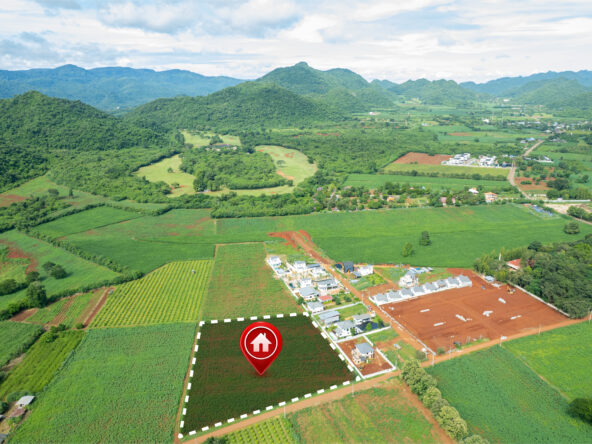I. Introduction
In the dynamic world of investments, diversification is a key strategy to mitigate risks and enhance long-term returns. One often overlooked avenue for diversification is recreational land investments. In this blog post, we’ll explore the advantages, types, and considerations of investing in recreational land, offering insights into how it can contribute to a well-rounded investment portfolio.
II. Advantages of Recreational Land Investments
A. Potential for Capital Appreciation
Recreational land investments offer a compelling prospect for capital appreciation, making them an attractive addition to any diversified portfolio. The intrinsic value of land tends to appreciate over time, and when strategically located in regions experiencing growth and development, the potential for substantial returns increases. Investors who grasp the dynamics of market trends and select properties with foresight can find themselves sitting on appreciable gains as the years unfold.
As urbanization continues and the demand for natural retreats rises, well-chosen recreational land investments become not just a parcel of earth but a gateway to exclusive experiences. The allure of untouched landscapes, access to outdoor activities, and proximity to scenic vistas contribute to the overall appeal of the property, creating an environment conducive to capital appreciation.
B. Tax Benefits
One of the often-overlooked advantages of investing in recreational land lies in the realm of tax benefits. Property owners may qualify for various deductions, offering a potential boost to their overall financial position. Common deductions include property taxes and mortgage interest, providing a tangible advantage for those looking to offset their tax liabilities. Moreover, certain conservation easements and sustainable practices might open avenues for additional tax incentives, aligning environmental responsibility with financial gain.
Understanding the intricacies of tax benefits associated with recreational land investments is critical. Engaging with tax professionals well-versed in real estate regulations can uncover opportunities that might not be immediately apparent, ensuring investors maximize their returns while staying compliant with tax laws.
C. Portfolio Diversification
Diversification is the cornerstone of sound investment strategy, and recreational land provides a unique and often underutilized avenue for achieving this balance. While traditional asset classes such as stocks and bonds have their merits, the inclusion of recreational land adds an element of stability and insulation against market volatility. Unlike financial instruments that can be influenced by economic downturns or geopolitical events, the intrinsic value of land often remains resilient.
In times of market turbulence, having a diversified portfolio can act as a safeguard, mitigating the impact of losses in one sector with gains in another. Recreational land investments, with their potential for appreciation and relatively low correlation to traditional assets, can play a crucial role in fortifying a portfolio against the unforeseen twists and turns of the financial markets.
D. Personal Enjoyment and Recreation
Beyond the financial advantages, recreational land investments offer the priceless benefit of personal enjoyment and connection with nature. Owning a piece of land that allows for activities such as hunting, fishing, hiking, or simply enjoying the tranquility of nature can be immensely fulfilling. This dual-purpose nature of recreational land investments sets them apart from more conventional investments, adding an emotional and experiential dimension to the financial equation.
Investors who value the outdoors not only have the potential for financial gains but also an opportunity to escape the stresses of urban life and reconnect with the natural world. The joy of witnessing a sunset over a pristine lake, the thrill of a successful hunting expedition, or the serenity of a wooded retreat — these experiences contribute immeasurably to the overall value of recreational land investments.
III. Types of Recreational Land Investments
A. Hunting and Fishing Properties
1. Lucrative Pastime:
Investing in land specifically tailored for hunting and fishing activities can be a rewarding venture. The demand for these properties continues to grow as outdoor enthusiasts seek private and well-maintained spaces to indulge in their passions. From deer hunting to fly fishing, owning land with abundant wildlife or access to pristine water bodies adds significant value to the investment.
2. Exclusive Experiences:
These properties often provide exclusive experiences for outdoor enthusiasts. Investors can strategically develop amenities such as hunting blinds, fishing docks, and wildlife habitats to enhance the property’s appeal. As the popularity of outdoor activities rises, the potential for attracting discerning buyers seeking unique experiences grows proportionally.
B. Vacant Land for Outdoor Activities
1. Versatility and Flexibility:
Investing in vacant land with potential for various outdoor activities opens the door to a wide range of possibilities. Whether it’s hiking, camping, or off-roading, the versatility of such properties allows for diverse recreational pursuits. Investors can choose to leave the land undeveloped or explore opportunities for low-impact recreational infrastructure.
2. Proximity to Natural Wonders:
The value of vacant land often increases if it is situated near renowned natural wonders or national parks. Accessibility to these attractions enhances the property’s desirability, making it an appealing investment for those seeking proximity to the great outdoors.
C. Waterfront Properties
1. Scenic Retreats:
Investing in waterfront properties, be it on lakes, rivers, or coastal areas, offers a premium experience. The serene beauty and recreational opportunities associated with waterfront living make these properties highly sought after. Investors can capitalize on the demand for waterfront retreats, providing a unique combination of natural beauty and recreational possibilities.
2. Boating and Water Activities:
The presence of water opens doors to various water-based activities, such as boating, fishing, and water sports. Investors can enhance the property by developing amenities like boat docks or private beaches, catering to those who seek a lifestyle that seamlessly integrates with the tranquility of the water.
D. Timberland Investments
1. Sustainable Revenue Streams:
Investing in timberland not only aligns with eco-friendly practices but also introduces a sustainable revenue stream. Timber harvesting, when managed responsibly, can generate income over the long term. This type of investment appeals to those who value both environmental conservation and financial returns.
2. Biodiversity and Conservation:
Timberland investments often involve careful consideration of biodiversity and conservation efforts. Investors can actively participate in preserving ecosystems, implementing sustainable forestry practices, and contributing to the long-term health of the land.
E. Consideration of Location and Accessibility
1. Proximity to Urban Centers:
The location of recreational land is a pivotal factor in its value. Proximity to urban centers enhances accessibility and convenience, making the property more appealing for both recreational and potential residential purposes. Investors should consider emerging trends in urbanization and population migration when evaluating location.
2. Infrastructure Development Potential:
Regions with potential for infrastructure development, such as new roads or recreational facilities, can significantly impact the property’s value. Savvy investors keep an eye on planned developments and assess how these changes might positively influence the land’s future potential.
Investors entering the realm of recreational land have the opportunity to tailor their investments to match their interests, financial goals, and the evolving demands of the market. Whether it’s the thrill of hunting, the tranquility of waterfront living, or the sustainable appeal of timberland, each type of recreational land investment offers a unique avenue for portfolio diversification and potential returns. In the following sections, we’ll explore the critical factors to consider before making a recreational land investment and delve into the risks and challenges inherent in this distinctive sector.
IV. Factors to Consider Before Investing
Investing in recreational land can be a fulfilling venture, but success hinges on careful consideration of several key factors. Before diving into this unique market, prospective investors should conduct thorough due diligence and be aware of the following critical elements:
A. Market Analysis and Trends
1. Local Market Dynamics:
Understanding the local market dynamics is paramount. Analyze trends in property values, demand for recreational land, and any potential shifts in the market that could impact the investment’s performance.
2. Future Growth Prospects:
Evaluate the region’s potential for growth. Factors such as population trends, economic development, and infrastructure projects can significantly influence the value of recreational land over time.
3. Market Cycles:
Recreational land, like any real estate, experiences market cycles. Recognizing the current phase of the cycle can help investors make informed decisions about when to buy or sell.
B. Legal Considerations and Zoning Regulations
1. Legal Assistance:
Navigating legal considerations is crucial. Engage with legal professionals specializing in real estate to ensure compliance with zoning regulations, land use restrictions, and any other legal nuances that may impact the property.
2. Zoning Flexibility:
Understand the property’s zoning designation and explore its flexibility. Some zoning classifications may restrict certain activities or developments, while others may offer more freedom. Assess how zoning regulations align with your investment goals.
C. Environmental Impact and Sustainability
1. Environmental Assessments:
Conduct thorough environmental assessments to identify any potential issues or risks associated with the land. This includes evaluating soil quality, water sources, and any past contamination that may affect the property’s value.
2. Sustainable Practices:
Consider incorporating sustainable practices into the land management plan. This not only aligns with environmental responsibility but can also enhance the property’s long-term appeal, especially in a market where eco-friendly considerations are gaining prominence.
D. Infrastructure and Development Potential
1. Accessibility:
Proximity to infrastructure and accessibility are key factors. Evaluate the ease of reaching the property, as well as its distance from amenities, transportation hubs, and major urban centers. Improved accessibility can positively impact both current and future property values.
2. Potential for Development:
Explore the potential for future development in the area. Planned infrastructure projects, such as roads or recreational facilities, can significantly influence the property’s value. An understanding of the development landscape can inform long-term investment decisions.
E. Risks and Challenges
1. Market Volatility:
Realize that, like any investment, recreational land is not immune to market fluctuations. Market volatility can impact property values, and investors should be prepared for potential downturns.
2. Natural Disasters and Climate Risks:
Assess the property’s susceptibility to natural disasters and climate-related risks. Coastal properties may face hurricane risks, while others may be prone to wildfires or flooding. Adequate insurance and risk mitigation strategies are essential.
3. Maintenance and Ownership Costs:
Understand the ongoing costs associated with owning recreational land. Property taxes, maintenance, and potential development costs should be factored into the overall investment strategy to avoid unexpected financial burdens.
4. Potential for Limited Liquidity:
Recognize that recreational land investments can have limited liquidity. Selling the property may take time, and investors should be prepared for a more extended holding period.
Investors who meticulously consider these factors will be better positioned to make informed decisions and navigate the unique challenges associated with recreational land investments. The next section will explore effective strategies to ensure successful outcomes in the world of recreational land investment, from meticulous research to collaboration with real estate professionals.
V. Risks and Challenges
While recreational land investments present exciting opportunities, they also come with their share of risks and challenges. It’s crucial for investors to be aware of these factors and develop strategies to mitigate potential pitfalls. Here are some of the primary risks and challenges associated with investing in recreational land:
A. Market Volatility
1. Cyclical Nature:
Like any real estate investment, recreational land is subject to market cycles. Economic downturns or shifts in demand for outdoor properties can result in fluctuations in market values. Investors should be prepared for the cyclical nature of the real estate market.
2. Sensitivity to Economic Factors:
Recreational land values can be sensitive to economic factors, including interest rates and overall economic health. Changes in these factors can impact both demand and pricing in the market.
B. Natural Disasters and Climate Risks
1. Susceptibility to Natural Events:
Recreational land, especially in certain regions, can be susceptible to natural disasters such as hurricanes, floods, wildfires, or earthquakes. Investors should conduct thorough risk assessments and consider the potential impact of these events on the property.
2. Insurance Considerations:
Securing adequate insurance coverage is essential. Investors should carefully review insurance policies to ensure they provide comprehensive coverage for various types of natural disasters, considering the specific risks associated with the property’s location.
C. Maintenance and Ownership Costs
1. Ongoing Expenses:
Owning recreational land involves ongoing expenses, including property taxes, maintenance costs, and potential development expenses. Investors must budget for these costs to avoid financial strain and ensure the property remains an asset rather than a burden.
2. Unforeseen Costs:
Unexpected expenses can arise, such as the need for environmental remediation, infrastructure repairs, or legal issues. Thorough due diligence before the purchase and regular property inspections can help uncover potential issues early on.
D. Potential for Limited Liquidity
1. Extended Holding Period:
Recreational land investments typically have a more extended holding period compared to more liquid assets like stocks. Investors should be prepared for the possibility that selling the property may take time, especially if market conditions are not favorable.
2. Limited Buyer Pool:
The pool of potential buyers for recreational land may be smaller than that for more traditional real estate. This limited market can affect the ease and speed of selling the property.
E. Environmental and Regulatory Compliance
1. Changing Regulations:
Environmental regulations and land use policies may change over time, affecting the permissible uses of the land. Staying informed about regulatory changes is crucial to avoid legal complications.
2. Conservation Easements:
While conservation easements can offer tax benefits, they also come with restrictions on how the land can be used. Investors should carefully consider the implications of conservation easements on their long-term plans for the property.
F. Market Timing and Economic Conditions
1. Timing Challenges:
Timing the market can be challenging, and investors may face difficulties predicting the optimal time to buy or sell. Economic conditions, such as interest rates and overall market sentiment, can impact the success of a recreational land investment.
2. Economic Downturns:
During economic downturns, recreational land may be more susceptible to reduced demand as discretionary spending decreases. Investors should be prepared for the potential impact of economic downturns on the market.
G. Regional and Location-Specific Risks
1. Regional Economic Factors:
Recreational land values can be influenced by regional economic factors. Changes in local economies, employment rates, and population trends can impact the desirability and value of properties in a particular region.
2. Natural Resource Market Volatility:
For properties with timberland investments, fluctuations in the natural resource market can impact the profitability of timber harvesting. Understanding market dynamics in this sector is essential for successful timberland investments.
Navigating these risks and challenges requires a combination of thorough research, risk management strategies, and a long-term perspective. In the next section, we’ll explore effective strategies for successful recreational land investments, providing insights into research methodologies, collaboration with real estate professionals, and the importance of financial planning.
VI. Strategies for Successful Recreational Land Investments
Investing in recreational land is a nuanced endeavor that demands careful consideration and strategic planning. Here are key strategies to ensure success in the realm of recreational land investments:
A. Research and Due Diligence
1. Thorough Market Research:
Before diving into any investment, conduct comprehensive market research. Understand local market dynamics, recent trends, and potential future developments. Analyze the demand for recreational land in the region and identify any factors that may influence property values.
2. Environmental and Risk Assessments:
Invest in thorough environmental and risk assessments. Identify potential risks associated with the property, such as susceptibility to natural disasters, soil quality, and any environmental issues. This due diligence is crucial for making informed decisions about the property’s long-term viability.
3. Market Timing:
While timing the market perfectly is challenging, keeping an eye on market cycles and economic conditions can help inform investment decisions. Assess whether the current market conditions align with your long-term goals and risk tolerance.
B. Working with Real Estate Professionals
1. Engage Experienced Real Estate Agents:
Collaborate with real estate agents who specialize in recreational land. They possess valuable insights into local markets, zoning regulations, and can help identify properties that align with your investment objectives.
2. Professional Appraisals:
Invest in professional appraisals to determine the fair market value of the property. Appraisers with experience in recreational land can provide an accurate assessment, helping you make informed decisions about the property’s worth.
3. Legal Advisors:
Engage legal advisors well-versed in real estate law. They can guide you through the legal intricacies, zoning regulations, and environmental considerations associated with recreational land investments, ensuring compliance and preventing potential legal issues.
C. Budgeting and Financial Planning
1. Realistic Budgeting:
Establish a realistic budget that accounts for the purchase price, closing costs, ongoing maintenance, property taxes, and potential development expenses. A well-thought-out budget is crucial for avoiding financial strain and ensuring the investment remains financially viable.
2. Financial Projections:
Create financial projections that consider potential returns on investment, taking into account factors such as market appreciation, sustainable revenue streams (e.g., timber harvesting), and any tax benefits. This can provide a clearer picture of the long-term financial viability of the investment.
D. Long-Term Investment Horizon
1. Patience and Persistence:
Approach recreational land investments with a long-term perspective. Understand that the value of land may appreciate gradually over time, and patience is often a key virtue. Be persistent in adhering to your investment strategy and avoid making hasty decisions based on short-term market fluctuations.
2. Adaptability to Market Trends:
While a long-term perspective is essential, be adaptable to changing market trends. Regularly reassess the market conditions, consider adjustments to your investment strategy if necessary, and capitalize on emerging opportunities.
E. Property Management and Enhancement
1. Land Management Plans:
Develop comprehensive land management plans that align with your investment goals. This includes sustainable practices, wildlife habitat preservation, and potential improvements to enhance the property’s appeal.
2. Amenities and Infrastructure:
Consider enhancing the property with amenities that cater to potential buyers’ interests. Whether it’s developing trails, creating fishing ponds, or establishing camping sites, thoughtful improvements can significantly increase the property’s market value.
F. Networking and Community Engagement
1. Networking with Industry Professionals:
Build relationships with professionals in the real estate and land management industries. Networking can provide access to valuable insights, potential investment opportunities, and a supportive community of like-minded individuals.
2. Community Engagement:
Engage with the local community and stakeholders. Understanding the community’s needs, concerns, and potential developments can offer valuable information that may impact the property’s value.
G. Continuous Monitoring and Adaptation
1. Regular Property Inspections:
Conduct regular property inspections to identify any issues promptly. Regular monitoring helps address maintenance needs, assess the impact of environmental changes, and ensure the property remains in optimal condition.
2. Adaptation to Changing Circumstances:
Be adaptable to changing circumstances. Whether it’s shifts in market conditions, new zoning regulations, or evolving environmental considerations, an adaptive approach ensures that your investment strategy remains relevant and effective.
By incorporating these strategies into your approach, you can navigate the complexities of recreational land investments more effectively. From meticulous research and collaboration with real estate professionals to budgeting and long-term planning, a strategic and informed approach is key to achieving success in this unique sector. In the next section, we’ll explore case studies and success stories to provide practical insights into the world of recreational land investments.
VII. Conclusion
In conclusion, diversifying your investment portfolio with recreational land can be a rewarding strategy, offering financial returns along with personal enjoyment. The advantages of capital appreciation, tax benefits, and portfolio diversification make recreational land a compelling option for investors seeking a unique asset class.




